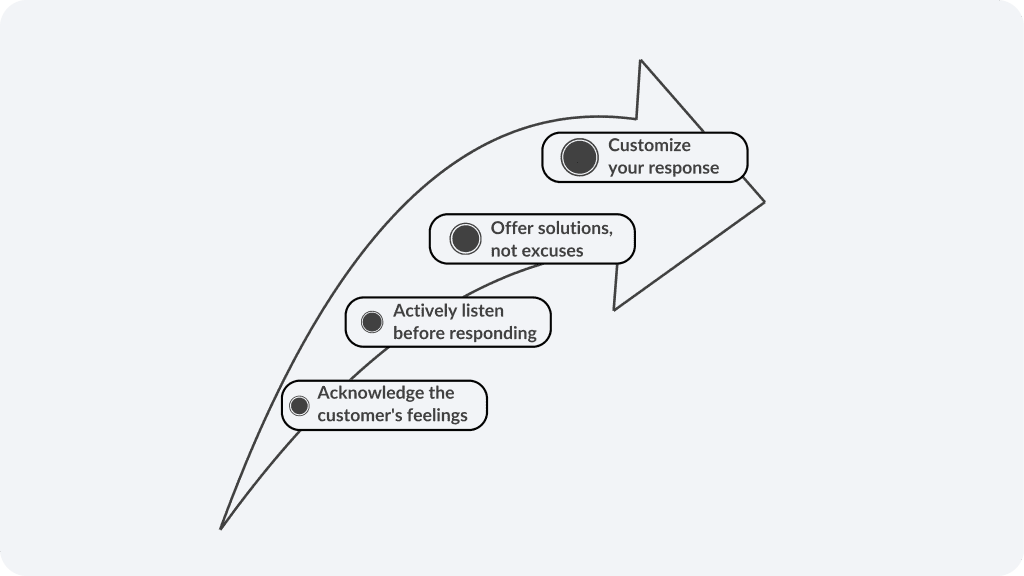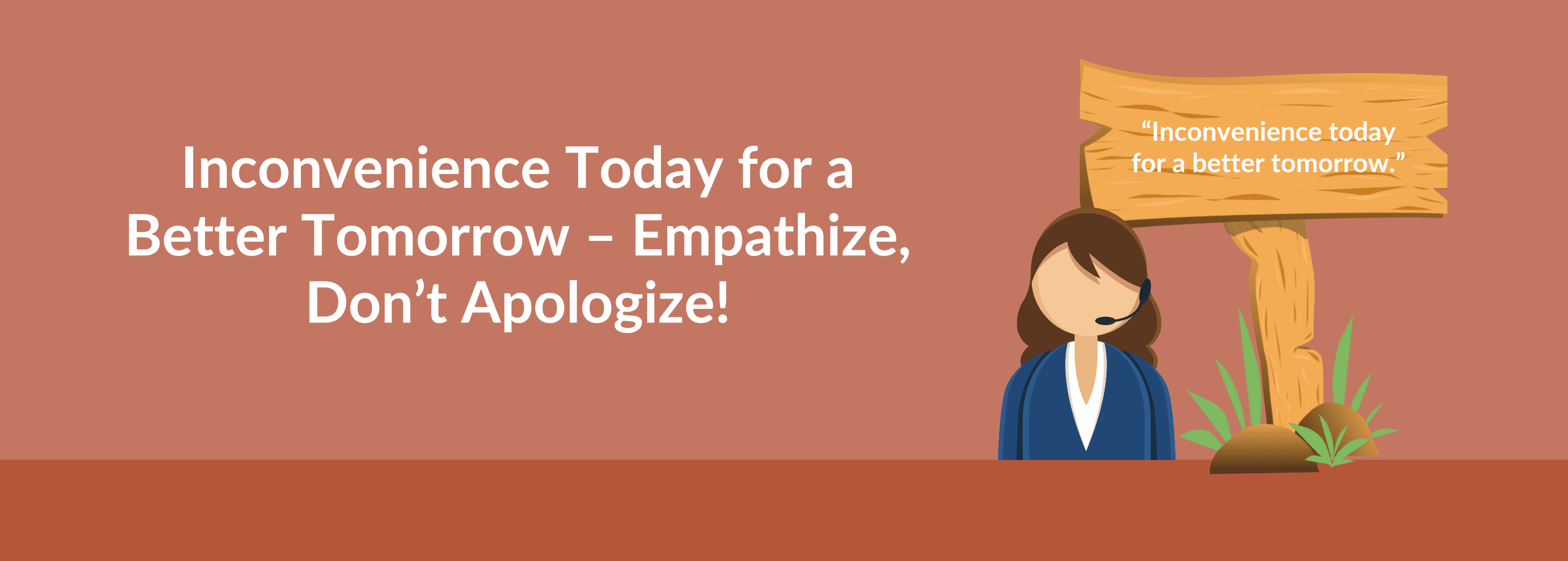Inconvenience Today for a Better Tomorrow – Empathize, Don’t Apologize! – Real Case Scenarios
How many of us have come across these signboards in different cities in India?
“Inconvenience today for a better tomorrow.”
When is that tomorrow going to come? When is that board going to show up again at the same places?
This statement neither empathizes nor apologizes. It just bluntly says that this is an inconvenience, and your choices are rather limited.
While figuring out a solution for this is not the point of this article, I want to stress the need to communicate differently, where you empathize rather than apologize.
Imagine if the communication is like this.
“We understand this is inconvenient right now, but by 2027, you’ll enjoy a world-class experience. Thank you for your patience.”
This is purely empathetic.
It acknowledges the inconvenience and expresses gratitude while focusing on the positive future outcome.
Let me give you a few examples of empathy in action.
Example #1
I recently checked into a Hotel in Bangalore. The rooms were pretty spacious and had everything you needed. There was some construction work going on in the adjacent building facing the window of my room. Soon, it became too noisy, and I couldn’t sleep properly.
I complained about the noise. Immediately, someone from the housekeeping visited my room.
Once inside my room, he mentioned, “I can understand how this noise might be very annoying, and we will take every step to make your stay comfortable.”
The hotel immediately moved me to a quieter room and added a complimentary Dinner to my stay.
Example #2
My son lives in a hostel, and I had ordered a gift to be delivered on his birthday. I received a text from the eCommerce platform that the delivery is getting delayed and may not be delivered on his birthday.
This was an annoyance for me.
So, I called up their customer care and explained why the delivery had to happen on the same day.
The customer care representative responded, stating, “I understand how disappointing it would be for you not to deliver the gift on time, especially when it is meant for a birthday. Let me expedite this for you and put it on priority delivery. Rest assured, it is on me, and the gift will be delivered on the special day.”
They did that, and I couldn’t be happier.
How Do Brands Handle Customer Issues?
Very often, brands get into an apologetic mode. People have grown dumb to customer service apologies.
Look at sentences like these:
• I’m sorry.
• We regret the inconvenience.
• Sorry for the inconvenience.
• We apologize for the inconvenience.
• Sorry for the trouble.
Has any of these ever sounded meaningful, and did you really feel that they are sorry about your situation?
These sentences don’t mean anything without a resolution.
Instead, being more empathetic helps customers feel valued and listened to.
Empathy Trumps Apologies
- As a customer, you are just not looking for solutions, but you want to feel understood. The first step in the interaction should be to acknowledge your customer’s frustration or disappointment. This shows that you care about their experience.
- Often, customers find apologies irritating. When someone says, I’m sorry without listening to you fully, it loses its impact and can even irritate the customer.
- Customers turn loyal when organization truly understands their concerns and cares about their feelings. They’re more likely to remain faithful even after a negative experience.
From Apologies to Empathy – Steps to Follow

Taking Ownership and Providing a Solution
Taking personal responsibility builds trust not only in you during this conversation but in your company as a whole. This would make the customer feel they have an advocate on their side, and this will lower their frustration.
After explaining what steps you’ll take to resolve the issue, give a clear timeline for resolution. If it’s a complex problem, explain what you’ll do in stages.
I will give you a classic example of this from the movie ‘The Intern.’
It stars Robert De Niro and Anne Hathway, and Anne plays the founder of a startup called “About the Fit.”
Here is the customer’s problem:
Anne is on the phone with a bride with no dress. Somehow, the pink dress purchased was delivered in charcoal grey, and the wedding is 3 days away.
Here is the solution:
Anne apologizes for the mistake and takes full responsibility for the problem. She does not ask questions; she solves the problem by shipping a new dress.
To show that she really cares, she offers to refund the full amount of the dress as compensation for the stress created on the bride three days before her wedding.
To make the interaction even more personal, she offered her cell phone number in case anything went wrong again. She promised to check on the dress personally before it is shipped.
The secret of success here is that she made the problem hers instead of the customer’s. She made it personal; she offered an immediate solution with guarantees to remove the stress fully, and she went beyond expectations by providing a full refund.
The customer will always remember the solution and not the problem.
She did not try to find out where the problem was when the customer was waiting. She offered a solution and would figure out how to avoid such a thing from happening again.
You can watch this scene here.
Empathy in customer service is more than just good manners. You create connections and loyal customers with empathy.
By replacing apologies that don’t mean anything with empathy will show your understanding of customer’s needs and feelings.
Remember, the goal is not just to fix issues but to ensure the customer feels heard and valued in the process.
Empathize. Don’t apologize.
